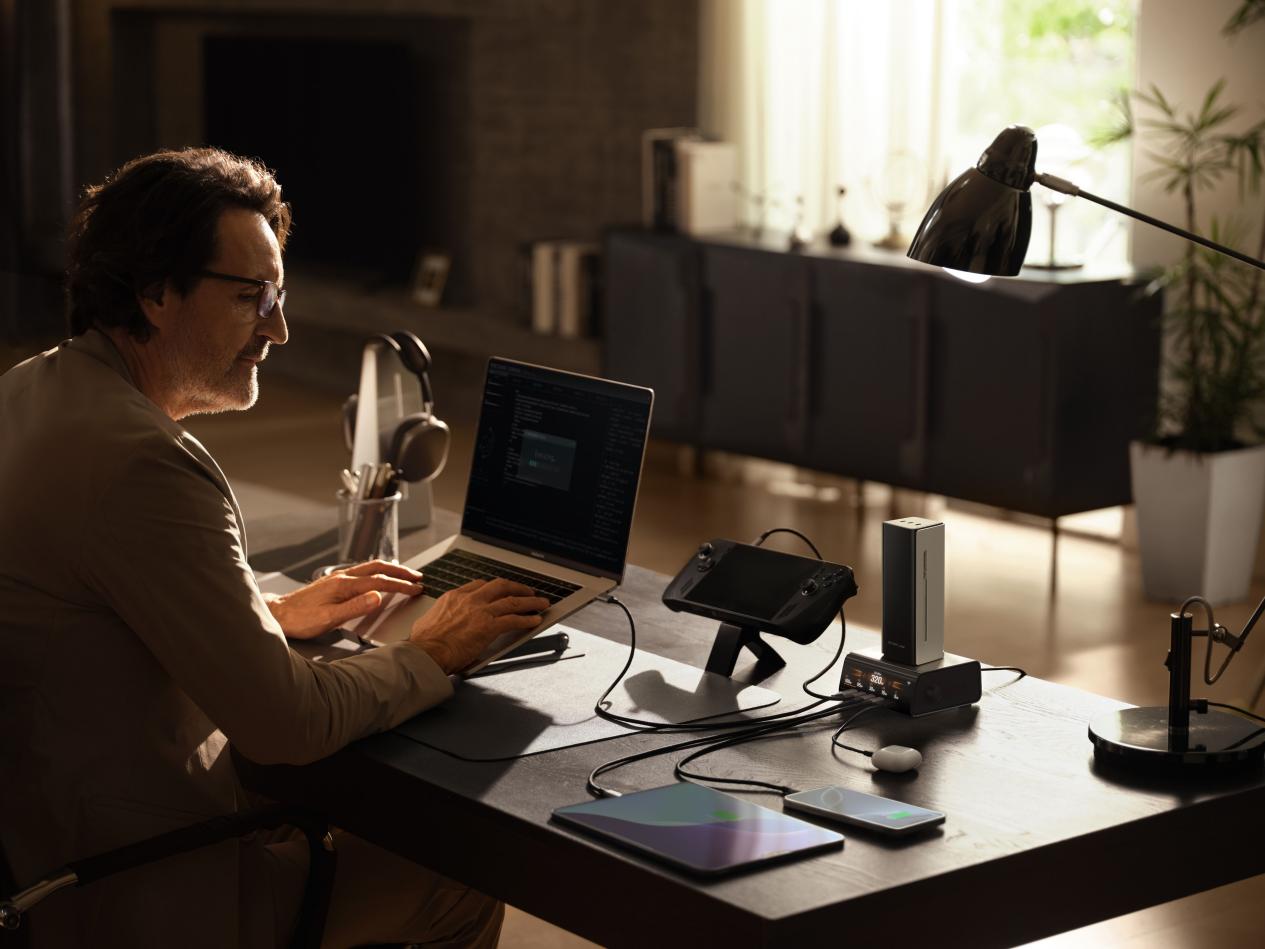Does Unplugging Appliances Save Electricity
It's a common belief that an appliance isn't using electricity once it's turned off, but this often isn't the case. Instead of shutting down completely, many modern electronics go into a standby mode to power functions like a digital clock or to wait for a signal from a remote. This continuous "phantom load" from a single device is small, but when you account for all the electronics in a typical home, the wasted energy can add a surprising and unnecessary amount to your yearly utility bills.
Why Your Devices Use Power Even When Turned Off
This continuous, low-level power consumption is often called "phantom load" or standby power. It’s not a defect but is usually an intentional feature designed to make devices more convenient. The power is used for several common functions.
To Receive Remote Control Signals
Many devices need to stay partially active to respond to your commands. A TV, for example, must continuously power a sensor to receive signals from the remote. Without this constant power supply, you would have to turn it on manually every time. The same principle applies to stereos, air conditioners, and other remote-controlled equipment.
To Maintain Clocks and Network Connections
Other appliances use standby power for their basic operations. The digital clocks on microwaves, ovens, and coffee makers all require a steady supply of electricity to keep time. Smart devices also need power to stay connected to your Wi-Fi for software updates and to respond to voice commands. A computer in "sleep" mode is another example, as it uses power to hold your session in memory for a quick start.
To Keep Chargers and Adapters Ready
External power adapters are another common source of phantom load. The charging bricks for laptops, phones, and other devices often draw power as long as they are plugged into the wall, even if a device isn't connected. If one of these chargers feels warm to the touch, that heat is a physical sign of wasted electricity.
Which Devices Use the Most Standby Power?
While many electronics draw some power on standby, their consumption levels vary significantly. The most effective way to reduce waste is to focus on the devices that use the most energy when they are supposedly "off." We can group them into three categories.
Primary Sources of Standby Power
Home entertainment and office equipment are typically the largest sources of standby power.
- TV and Satellite Boxes: Digital cable and satellite boxes, especially those with a DVR, constantly use power to update program guides and prepare for scheduled recordings.
- Video Game Consoles: Most modern consoles have a "rest mode" that allows for fast start-ups and background game updates. This convenience comes at a cost, as this mode can use a significant amount of power.
- Televisions and Audio Receivers: Smart TVs and stereos use energy to maintain network connections and power their internal sensors.
- Computers and Printers: Desktop computers in sleep mode and printers left in a ready state are common sources of wasted energy.


Secondary Sources of Standby Power
These items use less power individually, but their combined total becomes significant because most homes have so many of them. This category includes kitchen appliances like microwaves and coffee makers with digital clocks. It also covers the numerous chargers for phones, tablets, and electric toothbrushes, as well as smart home speakers and digital photo frames that are always on.
Devices with Little to No Standby Power
Some appliances use no power when turned off. These are typically simpler items with a true mechanical switch that physically cuts the electrical circuit. This includes basic toasters, blenders with a dial, and lamps with a physical on/off switch. Unplugging these specific items will not make a difference.
The Real Cost of Standby Power
The combined phantom load from all the devices we've discussed has a substantial impact. According to studies by the U.S. Department of Energy, standby power is responsible for 5% to 10% of a typical home's total electricity use.
In financial terms, this means an average household can spend between $100 and $200 per year on electricity that serves no real purpose. Beyond the effect on your budget, this unnecessary consumption has an environmental cost. By reducing this waste, you help conserve natural resources and lower your home's carbon footprint, which lessens the overall demand on power plants.
How to Reduce Wasted Electricity
Managing standby power in your home doesn't have to be complicated. A few simple habits and tools can make a big difference.


Unplug Devices Directly
The most straightforward method is to unplug devices when you're finished using them. This approach costs nothing and is 100% effective, though it can be inconvenient for outlets that are difficult to reach.
Take Control of Your Energy Consumption
The EcoFlow DELTA 2's smart outlets and mobile app let you remotely manage your electronics, automatically identifying energy vampires while providing reliable backup power. Its energy-efficient design and family-sized capacity make it the perfect upgrade from basic power strips for serious energy management.
Automate with Smart Plugs
Smart plugs offer an automated solution. Using an app on your phone, you can schedule when you want the power turned off. For instance, you could use a smart plug for your entertainment center to automatically cut the power late at night and restore it in the morning, ensuring you aren't wasting energy while you sleep.
Choose Energy-Efficient Products
When you buy new electronics, make energy efficiency a priority. Look for the Energy Star label. Products with this certification are designed to meet strict standards, including using significantly less standby power than conventional models.
Which Appliances Should Stay Plugged In?
While managing standby power is useful, it doesn't make sense to unplug everything. Certain devices need a constant power supply for safety, to function correctly, or simply because the inconvenience of unplugging them outweighs the potential savings.
Critical Safety and Health Devices: You should never unplug essential equipment like home security systems, plug-in smoke detectors, or necessary medical devices.
Major Appliances: Your main refrigerator and freezer should always remain on. Only unplug them for cleaning or if you are away for an extended period and have completely emptied them.
Internet and Recording Devices: For most households, the Wi-Fi router needs to be left on to provide a stable internet connection. Similarly, if you use a DVR or satellite box to record programs, it must stay powered on to function correctly.
Appliances with Complex Resets: Some electronics go through a lengthy or complicated setup process every time they are powered back on. In these cases, the hassle is not worth the minor energy savings.
The key is to apply energy-saving habits where they are most effective. For the exceptions listed here, safety and practicality should always come first.
Start Cutting Your Energy Waste!
Reducing energy waste doesn't have to be complicated. Start by being strategic with your approach. Use power strips to group devices together, allowing you to turn off multiple electronics with a single switch. Develop a habit of unplugging chargers and other items when they're not in use. Consider investing in smart plugs to automate power management. These small, practical changes can significantly lower your energy bills and make a positive impact on the environment. Begin your journey toward more efficient energy use today!
5 FAQs about Standby Power and Saving Electricity
Q1: Does Unplugging Appliances Save Electricity?
Unplugging appliances does save a meaningful amount of electricity and money over time. The key is to be strategic, not obsessive. By using tools like power strips for your device-heavy areas and developing a habit of unplugging chargers and other items when they’re not needed, you can effectively reduce waste. Making these small changes is a practical way to lower your energy bills and contribute to conservation efforts.
Q2: My phone charger feels warm even when my phone isn't connected. Is this dangerous?
If it is only slightly warm, it is generally not dangerous. That warmth is the physical sign of the wasted electricity being drawn by the charger (its phantom load). However, if a charger ever becomes very hot to the touch, it may be malfunctioning. You should unplug it immediately and replace it to prevent any potential fire hazard.
Q3: Are smart plugs worth the cost if they use power too?
Yes, smart plugs use a tiny amount of standby power to stay connected to your Wi-Fi network. However, the amount of energy they save by turning off a high-consumption device (like a game console or a full entertainment center) for several hours a day is far greater than the small amount they use themselves. For most people, when used on the right devices, they quickly pay for themselves in energy savings.
Q4: Is phantom load a bigger problem with newer or older devices?
It's complicated. Many older electronics were not designed with energy efficiency in mind and can have very high standby power usage. While modern devices, especially those with an Energy Star rating, are generally much better, we now own far more electronics than ever before. So even if each new device is more efficient, the sheer number of them in a typical home means the total phantom load can still be a significant problem.
Q5: What is typically the single worst appliance for phantom load?
While it can vary, the most common culprit in many homes is the digital cable or satellite TV box, particularly models that include a DVR. These devices are almost always on and working—updating program guides, downloading data, and waiting to record shows—so they constantly draw a substantial amount of power even when you are not watching TV.